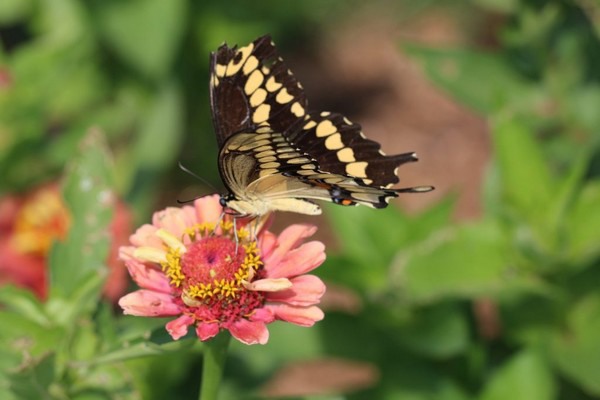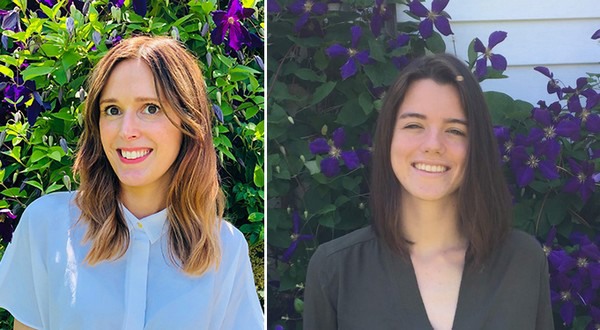Pollinator plants. Bee-friendly plants. Plants with a purpose. Although even a quick Google search of any of these categories will result in almost limitless lists of plants and gardening advise, all too often the lists and claims are not necessarily supported by good scientific data. Compounding the problem, these lists frequently include native species that are not commercially available.

With a goal of providing accurate information to consumers via their retail garden centres suppliers, OMAFRA’s Dr. Sarah Jandricic and summer student Famke Alberts have undertaken a research project designed to answer the question: Is there a role for non-native plants in the pollinator landscape?
“We hope the answer will be yes,” says Sarah. “Ideally, our research results will help garden centres take better advantage of this important trend.”
 Sarah Jandricic and Famke Alberts
Sarah Jandricic and Famke Alberts
“Aesthetics are always important,” adds Famke, “but consumer research clearly shows that millennials, who are currently driving this trend, are interested in plants with a purpose and they will pay a premium price for them.”
A continuation of two previous years of research at the University of Guelph’s trial gardens which are no longer available, beginning in the spring of 2020, the project will be located at the Landscape Ontario site in Milton. The project will study the attractiveness of eight exotic plants and eight nativars to a variety of pollinators, including butterflies, managed honeybees, native bumble bees and various pollinating flies and beetles.
The experiment’s design, explains Famke, includes assemblages – or groupings – of either all nativar or all exotic plants – much like a homeowner might grow. Eight plant species of either type were planted 4 x 2m garden plots (with approximately 1m x 1m for each individual plant species). With four gardens each of native and exotic plants to watch, that’s going to be a lot of pollinators to count! The entire pollinator trial garden, measuring 20 m by 20 m in total, will also include variety testing garden around the perimeter. The site will be visited by Famke and another OMAFRA summer student on appropriately sunny days, when they will observe and record the numbers and types of pollinators that visit the plants. Their observations will be supported by photographs and videos, to enable them to properly identify all pollinators, especially bees native to Ontario
“As far as we know, this is the only research of its kind in Canada,” says Sarah Jandricic. “It closely resembles and will support similar research work underway at Michigan State University.
“This project is complementary to the research work that is currently being conducted by Dr. Sullivan and Dr. Saxena,” she adds. “Their project objective is to breed new native selections suitable for commercial production, which could ultimately help support native pollinators,
while our own project seeks to identify plants already commercially available that have the same effect.”
The research team extends their sincere appreciation to Landscape Ontario for their support of this project. Further project results will be reported in future issues of COHA Connections
A special thank-you to the project’s collaborators:
Rodger Tschanz, Trial Garden Manager, University of Guelph
Dr. Al Sullivan, Professor, University of Guelph
Dr. Elsa Youngstead, Assistant Professor, Applied Ecology, North Carolina State University (helping with the bee ID from photos, as well as statistical analyses)
OMAFRA Summer Students Famke Alberts and Michael Boucher (part of the OMAFRA Summer Employment Opportunities program).
Source: cohaconnections.ca
